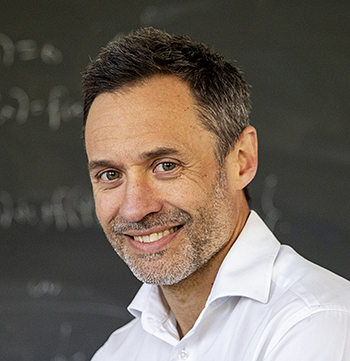AI can help the body heal itself

Can we learn the body's own language - and thus treat diseases? Cutting-edge research is underway at KTH Royal Institute of Technology to decode the nervous system's signals. The goal is to develop new treatment methods by understanding how our nerves and brain communicate with each other.
Imagine a small implant that sends electrical pulses to a nerve. The nerve signal is passed on to the immune system - and suppresses inflammation where it has occurred.
A collaboration between KTH Royal Institute of Technology and KI is currently developing a new type of treatment for chronic inflammation - a global health problem that the World Health Organisation classifies as one of the worst of our time. This includes diseases such as rheumatism, Crohn's disease and atherosclerosis - where atherosclerosis is one of the most common causes of death in the world.
"A new treatment would be a dream come true for all patients suffering from inflammatory diseases. These diseases are difficult to treat and cause a great deal of suffering," says Henrik Hult , professor of Mathematics at KTH Royal Institute of Technology and one of the researchers in the project.
Today, inflammation is treated with drugs that affect the whole body - not just the inflamed area. The side effects can be numerous and stressful. Bioelectronic medicine can offer an alternative: more targeted treatments that work with the body's own systems.
AI interprets nerve signals
The method is based on using electrical stimulation of nerves to activate the body's inbuilt ability to heal itself. But first the researchers must understand the signals sent by the nerves.
The research team at KTH Royal Institute of Technology is working on building mathematical models that can decipher nerve signals - something that has not previously been studied at this detailed level. Using AI and advanced computing, they are trying to interpret the signals that pass between the brain and the body.
The next step is to develop a self-learning AI system that can not only control the immune response in selected organs but also sense inflammation levels in real time and adjust treatment automatically.
"It's a long way off, but that's where we're aiming," says Hult, who is convinced that healthcare will one day be able to treat severe inflammatory diseases by using and influencing the body's own nerve signals.
Healing faster
The research team is also making progress, using a light-sensitive liquid to read information passing through the vagus nerve in laboratory experiments. This is the body's most important nerve, acting as a signaling pathway between the brain and the internal organs.
"It is crucial for moving forward. The vagus nerve carries a huge amount of information and we need to be able to discern just the signal we are looking for, amidst all the noise," says Hult.
The research team has previously shown that electrical nerve stimulation can speed up the healing of inflammation in critically ill patients in intensive care units. Now they hope to take the next step and scale up the experiments.
"Now we need to build bigger systems, speed up the trials and test more widely," says Hult.
Text: Christer Gummeson ( gummeson@kth.se )

